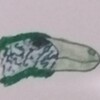HOME | DD
 artbyjrc — Underwater flight - Swimming birds
artbyjrc — Underwater flight - Swimming birds

#adaptation #auk #birds #coot #cormorant #dipper #diving #duck #flippers #grebe #guillemot #loon #merganser #penguins #petrel #rail #swimming
Published: 2021-12-01 09:01:17 +0000 UTC; Views: 22071; Favourites: 241; Downloads: 27
Redirect to original
Description
A selection of extant birds which swim underwater, to scale.
Birds and flight are an obvious connection, but many also show specific adaptations for swimming underwater. Penguins (spheniscids) are the most fully aquatic of all avians, seemingly able to 'fly' underwater. Being flightless, the wings have become short stout flippers which are used to propel them through the water. Changing the angle of the leading edge of the flipper when it moves up and down creates forward propulsion for both strokes. A trapped air layer on the surface and solid bones gives penguins neutral buoyancy during swimming. Penguins are just one group which use wing propulsion; others include auks (alcids), dippers (cinclids) and diving petrels (procellariids). It requires short muscular wings, as opposed to the long wings of soaring birds and as a result most are generally poor fliers.
Far more common are foot-propelled swimmers. Many species will use feet to paddle on the surface, however for efficient underwater swimming the feet are usually positioned to the rear of the body. The trade-off is difficulty walking on land. Webbed feet or lobed toes give the foot a wider surface area. Groups include cormorants (phalacrocoracids), loons (gaviids), grebes (podicipedids) and the diving ducks (anatids).
Rails are a hybrid model, with different species using either wings or feet. Sora rails Porzana carolina will use their wings to swim under the surface, while coots Fulica have lobed toes which expand to form a web when kicking under water.
While the former groups are able to dive from the water's surface, a third group are adept at dropping from the sky with speed into water. Plunge-diving (not illustrated here) requires specialised adaptations include reinforced rhamphotheca on the beak, strong nictating membranes on the eyes and contraction of the neck muscles. Species which plunge-dive includes gannets, pelicans, kingfishers and terns. They will often use their wings to help propel through the water.
Several groups of extinct underwater swimming birds have also been covered previously - Pseudo-penguins of the Pacific - Plotopterids , Penguins of the North - Alcids , Sea-going dinosaurs - Hesperorniths , Tuxedos of the South - Spheniscids 1 and Tuxedos of the south - Spheniscids 2 .
Related content
Comments: 16

👍: 1 ⏩: 1

👍: 1 ⏩: 0

👍: 1 ⏩: 0

👍: 1 ⏩: 1

👍: 1 ⏩: 2

👍: 1 ⏩: 0

👍: 0 ⏩: 1

👍: 1 ⏩: 0

👍: 1 ⏩: 1

👍: 1 ⏩: 0

👍: 1 ⏩: 1

👍: 1 ⏩: 0

















